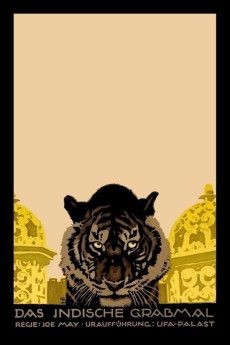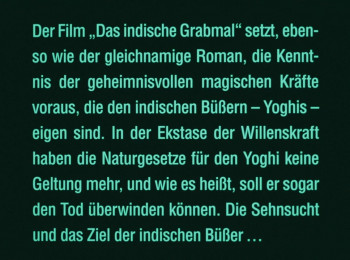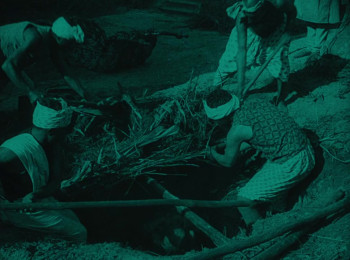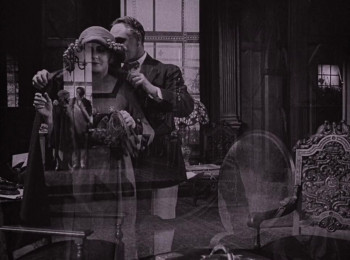Mysteries of India, Part I: Truth
1921 [GERMAN]
Action / Adventure / Fantasy

Plot summary
Ayan, Maharajah of Eschnapur, believes that his wife, Princess Savitri, has been unfaithful to him with officer Mac Allan. He decides to bury her alive, so he sends the Yogi Ramigani to England to look for Herbert Rowland, an architect; but when he orders him to build a tomb, Rowland refuses.
Director
Top cast
Tech specs
720p.BLU 1080p.BLUMovie Reviews
fighting the anti-silent prejudice
Lavish, fun silent epic beautifully restored on DVD
"The Indian Tomb" features a sprawling, epic story, eye-popping sets and costumes and a cast of hundreds if not thousands. If you're in the mood for an old-fashioned, exotic adventure of the type that would be impossible to produce nowadays its a good bet for you. This is a two-part film and the DVD with both parts is three-and-a-half hours long, so be prepared for a few nights viewing. Its also rather slow going at times, with some scenes being dragged out a bit too much for modern viewers, but overall I found it a treat to watch.
The most impressive actors to me were Conrad Veidt as the Rajah and Bernhard Goetzke as Ramigani the Yogi. Both have rather amazing and memorable faces. Goetzke's presence is remarkable and he was just as impressive in the same year playing Death in Fritz Lang's "Der Mude Tod". He is unknown today, possible because it looks as if he appeared in several Nazi productions in WWII so was perhaps blacklisted afterwards, but he was quite memorable in these two performances, the only two pieces of his work I have seen. I was not very impressed, however, by the nominal leads of the film, Olaf Fanss as the architect who travels to India to build a tomb for the Rajah and Mia May as his sweetheart. They both seem a bit too middle-aged and stodgy to be the center of all this intrigue, but perhaps that was the style of the times. The decidedly pudgy Ms. May, who was married to the film's director, Joe May, was reputedly 37 when the film was made, but could pass for 57 and in certain scenes has an unfortunate resemblance to George Washington in a dress. It was a big mistake in the "sacrifice" scene to put her in a bare-midriff outfit.
Still, this film is good nostalgic fun with man-eating tigers, leper colonies, globe-trotting action, all-powerful yogis and insanely jealous rajahs. Only Steven Spielberg could get away with it nowadays.











